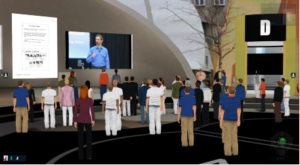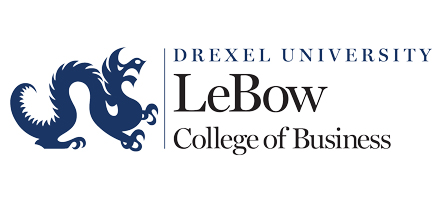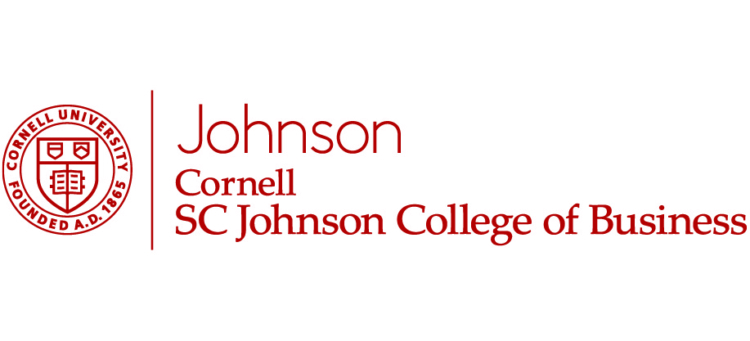Schools and businesses can choose their virtual surroundings from some 15 templates, ranging from a business park and executive office to a classroom auditorium. Administrators can even select wood or tile floors and add rooms and custom branding.
MIT’s avatars attended class in a virtual auditorium, complete with a stage and lectern. Here the physical presenter could load slides or images from his personal computer to presentation screens in the virtual world. The presenter’s avatar could even wield a virtual laser pointer to lead students through lectures. After class or during breakout sessions, participants can steer their avatars into a variety of mini-meeting rooms for small groups discussions.
For Avaya learning leader Paul McDonagh-Smith, who helped create AvayaLive Engage, the product answers the new demands of an increasingly digitized world. “We’re in an engagement kind of age where the digital experiences that can intrinsically motivate people and engage them are the ones that give the best results,” he says.
He estimates that 10 to 15 schools have started using the product. Tech giants such as IBM and TELUS have already signed on and use the program for training and remote meetings. At $600 per subscription annually, schools – and students for that matter- could save a bundle in travel and accommodation costs for remote programs.
Despite the savings and convenience of a virtual classroom, there are clearly some kinks that need to be worked out. Asking questions can be challenging, writes Jeffrey Ton, CIO of Goodwill Industries of Central Indiana, in his blog post about attending a Big Data program. Avatar students must navigate to the mike at the back of the classroom to be heard. The virtual attendees also missed out on the schmoozing that takes place during lunches and happy hours. The virtual humans also can’t exchange business card – yet, anyway. And collaborative exercises proved tricky. Ton points out that an option like Google Docs would have been helpful for participants.

Users can share images, video feeds and links from their personal computers on presentation screens in the virtual world
These drawbacks don’t dim Ton’s enthusiasm for the experience: “With no apologies whatsoever to the Material Girl, I just spent two days this week living in a virtual world. It was an incredible experience!”
Hirst say MIT is constantly tweaking the virtual experience and looking for ways to improve it. For future programs he aims to add more virtual facilitators, swap the convention hall environment for a sit-down setup with tables and chairs and introduce a feedback mechanism for avatars. “It’s a little easier in the virtual environment to stand still and say nothing. You don’t have the same sense of peer pressure, so we want to make sure people are engaged in the conversation,” he says.
MIT also flipped the attendance tables for its next Big Data event in October. The 150 virtual attendees will outnumber the 50 to 60 physical participants. The school has also increased the price for virtual attendees from $1,500 in April to $2,000 this fall. Physical attendees will still shell out more – some $2,950. However, Hirst says one day that could change, especially if convenience and the program’s overall value outweigh the current market perception that online education should cost less.
MIT aims to expand the platform to other executive education programs, and discussions are underway to use it as a collaboration tool for global projects. While Hirst doesn’t foresee Sloan’s full-time MBA going virtual anytime soon, he’s excited about the platform’s possibilities for massive online open courses (MOOCs). These mega-scale and largely free classes are growing in popularity. MIT has backed the MOOC movement by joining with Harvard and other top-tier universities to run edX, a nonprofit delivering free online courses. “There’s a need or desire to provide more human feeling and engagement in the MOOC model. Using Avaya would be an interesting way to address that,” Hirst says.
Avaya’s product, as cool as it is, may simply be the harbinger of even more existing learning platforms to come. MIT, in true quant fashion, plans to pull data from the virtual experience and leverage that information to help shape the future of online learning.
Hirst sums it up best in the MIT Sloan Expert blog: “It’s not about finding a particular approach or specific technology — there is no standing still in the world of technology — but rather looking to the direction of the future,” he writes.
DON’T MISS: THE MOST INNOVATIVE GLOBAL PROGRAMS or A NEW ERA FOR OPEN ENROLLMENT PROGRAMS




